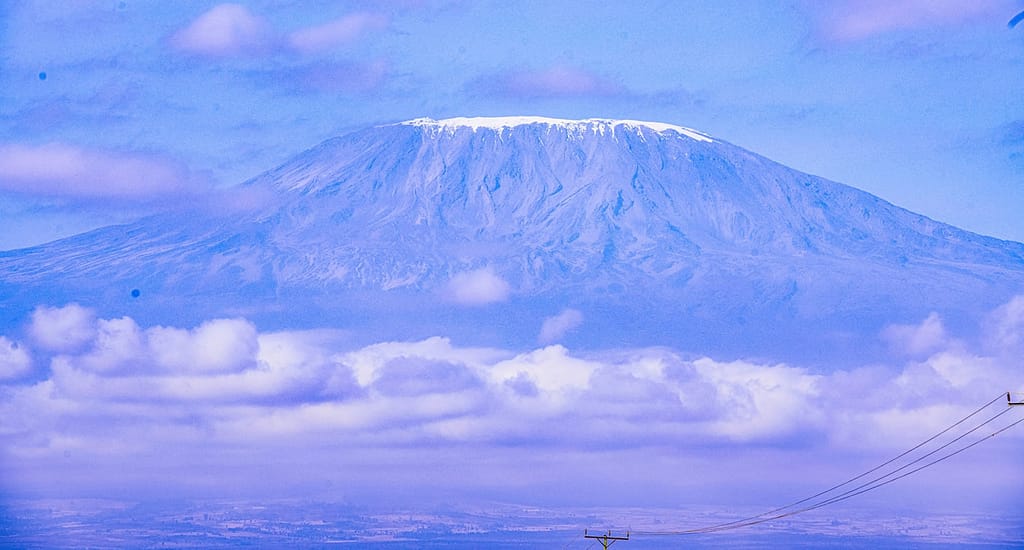Rising majestically above the East African savanna, Mount Kenya and Mount Kilimanjaro are two of the most iconic and sought-after mountains to climb on the African continent.
While both offer stunning vistas, challenging climbs, and the thrill of conquering a peak, each has its unique characteristics that make them stand out from the other. However, choosing between the two can be a daunting task, especially for first-time climbers.
That’s where this article comes in. We’ll take a closer look at the differences between Mount Kenya and Mount Kilimanjaro to help you make an informed decision. From accessibility and costs to climbing experience, scenery, and wildlife, we’ll provide you with all the information you need to choose the right mountain for your next adventure.
Comparison of the Climbing Experience between Mount Kenya and Mount Kilimanjaro
Climbing Mount Kenya and Mount Kilimanjaro are both incredible feats, but they each offer a different climbing experience. To help you decide which mountain is right for you, let’s compare their altitude and difficulty levels and consider their suitability for first-time climbers.
Mount Kenya stands at an altitude of 5,199 meters, making it the second-highest mountain in Africa after Mount Kilimanjaro. However, unlike Mount Kilimanjaro, which is a single peak, Mount Kenya is a massif consisting of several peaks, the highest being Batian. Climbing Mount Kenya can be challenging, but it’s generally considered less difficult than Mount Kilimanjaro due to its lower altitude. Climbers can expect to encounter steep, rocky terrain, and occasional snow and ice.
Mount Kilimanjaro, on the other hand, stands tall at 5,895 meters, making it the highest mountain in Africa. Climbing Mount Kilimanjaro is no easy feat, and the altitude can be a significant challenge for some climbers. The mountain has several different routes, each with varying difficulty levels, but all require a good level of fitness and stamina to complete. The most challenging routes are the Northern Circuit and Western Breach routes, while the Marangu route is the easiest.

When it comes to first-time climbers, both mountains offer suitable options. Mount Kenya, with its lower altitude, maybe a better option for those who are new to high-altitude climbing. The mountain’s lesser-known status means it’s less crowded and provides a more personal and immersive experience. The Naro Moru and Sirimon routes are popular routes for first-time climbers on Mount Kenya.
Similarly, Mount Kilimanjaro has routes suitable for beginners, such as the Marangu route. However, it’s essential to remember that even the easiest routes on Kilimanjaro require a good level of fitness and preparation, as the altitude can take a toll on the body. Climbing Mount Kilimanjaro requires several days of hiking and sleeping at high altitudes to acclimatize to the altitude.
Cost Comparisons
When deciding between Mount Kenya and Mount Kilimanjaro, it’s essential to consider the costs associated with each mountain.
Mount Kenya is generally considered to be a more affordable option than Mount Kilimanjaro. Climbing Mount Kenya costs between $700 and $800 for a four-day trek, depending on the route and services you choose. This price includes accommodation, meals, park fees, and guide and porter fees. It’s worth noting that Mount Kenya does not require a mandatory guide, unlike Mount Kilimanjaro, which means you can save on guide fees if you’re experienced and confident in your climbing abilities.
Mount Kilimanjaro, on the other hand, is a more expensive option, with prices ranging from $1,500 to $5,000, depending on the route, duration, and level of service you choose. The cost includes accommodation, meals, park fees, guide and porter fees, and equipment rental. The Marangu route is generally the cheapest option, while the Northern Circuit and Western Breach routes are the most expensive.
Several factors determine the cost of climbing both Mount Kenya and Mount Kilimanjaro. Firstly, accommodation can significantly impact the overall cost. Mount Kilimanjaro offers more luxurious accommodation options than Mount Kenya, which can increase the cost. Secondly, park fees differ between the two mountains, with Mount Kilimanjaro’s park fees being significantly higher. Thirdly, guide and porter fees also impact the cost, with Mount Kilimanjaro requiring a mandatory guide, while Mount Kenya does not. Finally, equipment rentals, such as tents, sleeping bags, and hiking poles, also increases the cost of climbing both mountains.
Accessibility Comparison
Accessibility is another critical factor to consider when choosing between Mount Kenya and Mount Kilimanjaro. While both mountains are located in East Africa, their accessibility differs significantly.
Mount Kenya is more accessible than Mount Kilimanjaro, mainly due to its proximity to Nairobi, Kenya’s capital city. The mountain is located about 150km northeast of Nairobi and can be reached by car or bus. The most popular route, the Sirimon route, takes about three to four hours to reach the base of the mountain from Nairobi. Additionally, the mountain has several entry points, making it easier to access.
Mount Kilimanjaro, on the other hand, is relatively remote and requires more planning and preparation to access. The mountain is located in Tanzania, and the closest international airport is Kilimanjaro International Airport, about 50km away from the mountain. From the airport, climbers can either take a taxi or shuttle bus to Moshi town, the starting point for most Kilimanjaro climbs. However, the transport options to Moshi can be limited, and climbers may need to book in advance to avoid any inconvenience.
Other factors that influence accessibility to both mountains include location and national park regulations. Mount Kilimanjaro is located in a remote region in Tanzania, and climbers must comply with Tanzanian national park regulations. The regulations require all climbers to have a permit, which can only be obtained from the Tanzania National Parks Authority (TANAPA). Additionally, climbers must be accompanied by a licensed guide and porters.
Mount Kenya, on the other hand, is located in the central highlands of Kenya and falls under the Kenya Wildlife Service (KWS). Climbers are required to obtain a permit from the KWS, and there are no mandatory guide requirements. However, the KWS strongly recommends hiring a guide, especially for first-time climbers.












